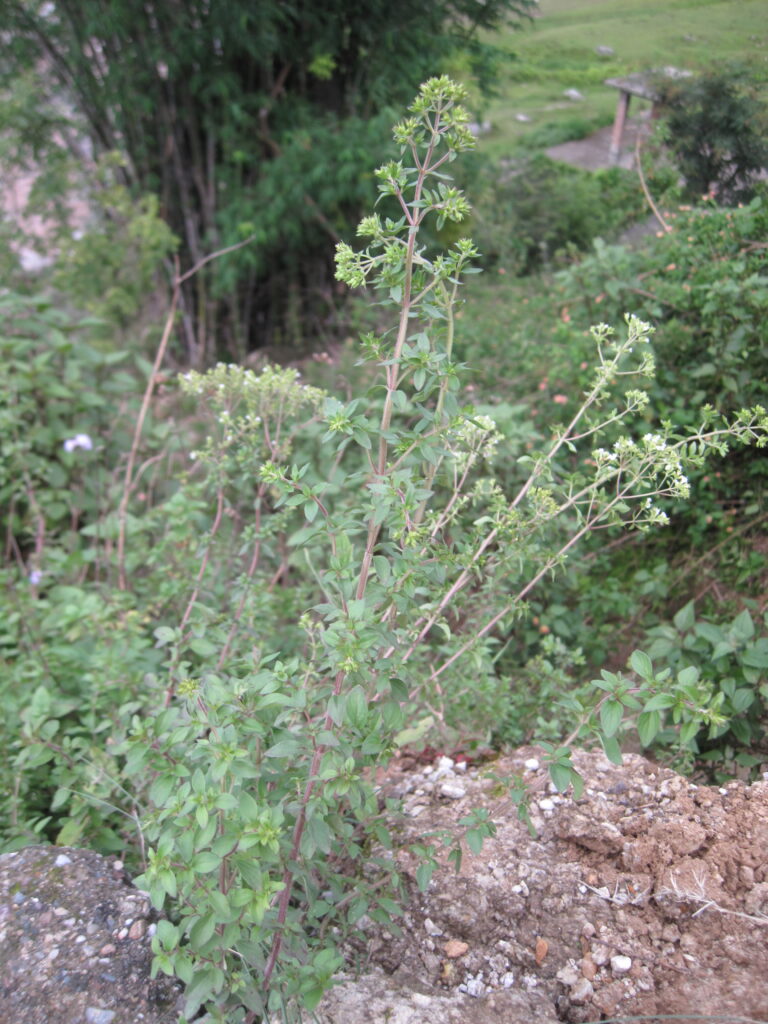Origanum vulgare L. has a woody. Stems erect or prostrate near base, 25-60 cm, purplish, retrorse pubescent or slightly floccose-pubescent, numerous, leafless near base, lower branches sterile. Rhizomes oblique, Petiole 2-7 mm; leaf blade ovate to oblong-ovate, 1-4 × 0.4-1.5 cm, glandular, adaxially shiny green tinged purple, sparsely villous, abaxially densely villous, base broadly cuneate to rounded, margin entire or remotely serrulate, apex obtuse to slightly obtuse. Spikes oblong, ± elongated in fruit; floral leaves mostly sessile, purplish; bracts green or purple, oblong-obovate to obovate or oblanceolate, ca. 5 mm, margin entire, apex acute. Calyx ca. 3 mm, minutely hispid or subglabrous; teeth triangular, ca. 0.5 mm. Corolla purple-red to white, tubular-campanulate, 5-7 mm; tube ca. 5 mm, exserted in bisexual flowers, ca. 3 mm, included in pistillate flowers, sparsely pubescent; upper lip ovate, ca. 1.5 mm, apex 2-lobed; lower lip ca. 2 mm, lobes oblong-ovate. Nutlets brown, ca. 0.6 mm, apex rounded. Flowering; July-September, fruiting; October-December.
















